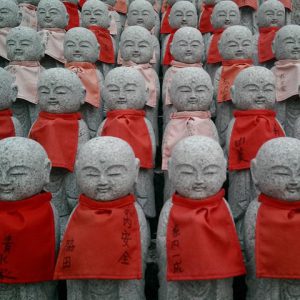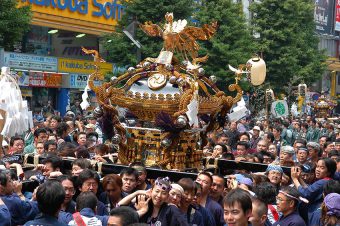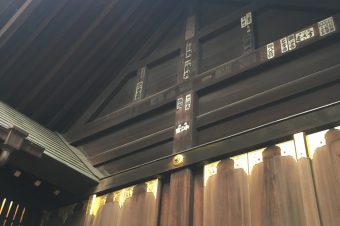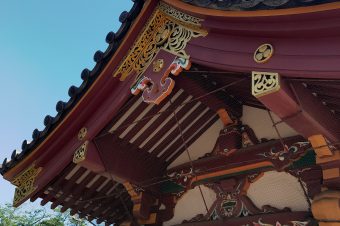If you have visited any temple or shrine in Japan, there is a good chance you have seen a statue wearing a red hat or red bib. One of the most frequent questions I have received about shrines and temples is, “Why are there so many statues wearing clothes?” The simple answer to this question is that it depends on the deity of the statue.
The most common statue you will see wearing a red bib is the Ojizo-sama. The Ojizo-sama can be found throughout the country along roadsides, around temples, and in cemeteries. These statues are usually very small and have a child-like appearance. So what do they mean? The Ojizo-sama statues are one of the most popular Japanese divinities and are seen as the guardian of children, particularly of children who died before their parents. What tourists usually find interesting are the red bibs that are commonly seen hanging on the statues. This practice is said to have begun when grieving parents put their child’s bib on the statue in hopes it would protect the child in the other world. Sometimes they even put toys and cartoon figurines around Ojizo-sama, who are also said to be protecting children from illness.
Personally, I was surprised by the reasoning behind this and I found it a little bit dark, but also endearing. I think this is a great way to pay respect to children who have passed away before their time.
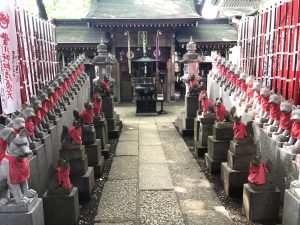 The second most common occurrence of the red bibs is often seen on the Kitsune or foxes. The reason behind this was more difficult to find. I have found many different theories behind why these statues are wearing bibs but the theory that seems to answer the question best actually has to do with the meaning behind the color red. In Japan, the color red is associated closely with a few deities in Shinto and Buddhist traditions, and statues of these deities are often decked in red clothing or painted red. This dates back to Japanese folklore where they believe that red is the color for “expelling demons and illness.” This is incredibly important especially for the Kitsune. The appearance of Kitsune at a shrine usually marks that the shrine is dedicated to the deity Inari.
The second most common occurrence of the red bibs is often seen on the Kitsune or foxes. The reason behind this was more difficult to find. I have found many different theories behind why these statues are wearing bibs but the theory that seems to answer the question best actually has to do with the meaning behind the color red. In Japan, the color red is associated closely with a few deities in Shinto and Buddhist traditions, and statues of these deities are often decked in red clothing or painted red. This dates back to Japanese folklore where they believe that red is the color for “expelling demons and illness.” This is incredibly important especially for the Kitsune. The appearance of Kitsune at a shrine usually marks that the shrine is dedicated to the deity Inari.
Inari is a popular deity with shrines and temples located throughout most of Japan. According to a 2005 survey by the National Association of Shinto Shrines, 32,000 shrines—more than one-third of Shinto shrines in Japan—are dedicated to Inari. Inari is one of the most well-known kami in popular folk Shinto. He (or she) is the god of rice and is related with general prosperity. In earlier Japan, Inari was also the patron of sword smiths and merchants. Primarily, however, Inari is associated with agriculture, protecting rice fields and giving the farmers an abundant harvest every year. The Kitsune is known as the messenger for Inari it is important for him to not bring illness to Inari so the rice harvest will be a bountiful one. This is because rice is sacred in Japan, closely associated with fertility and with sustaining life. This is why you often see Inari wearing red bibs, because it is believed that without them, it would be disastrous to the livelihood of the nation’s farmers and people.
